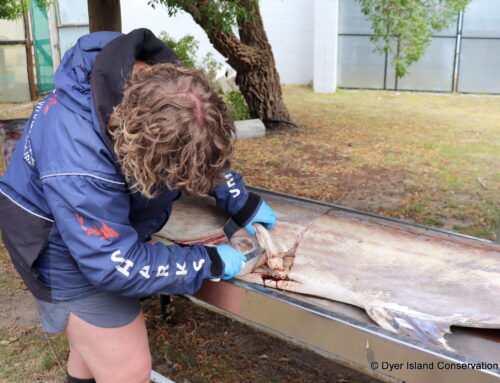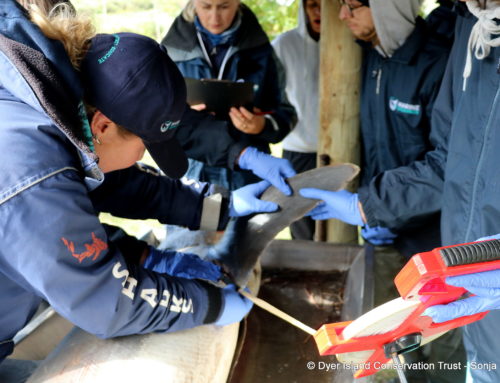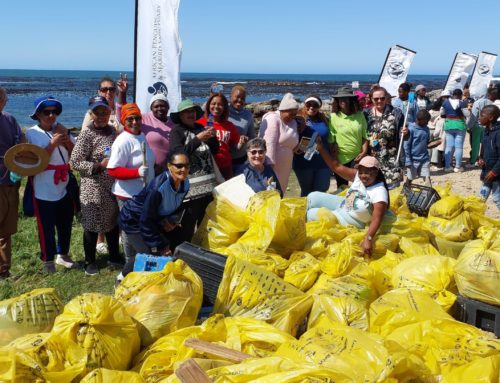Waiting for our tagging permit
August 16, 2010 by dyertrust
by DICTs Marine Biologist Alison Towner
As we wait for our tagging permit, we are certainly enjoying some awesome sharks this month, with an average of 6-10 sharks per trip seen of Shark Fever.
Weather conditions have been relatively stable for mid winter with only a couple of small cold fronts passing through the area. The predominant wind direction has been gentle north westerlies, with water temperature remaining surprisingly cool at 14 Celsius. Interestingly the majority of sharks we have located have been patrolling the East side of Dyer Island, specifically East of Geyser rock and visibility has been so fantastic the sea floor has been visible on many days!
Exciting shark observations
Most of the sharks this month have been 2-2.5m males, showing quite active and responsive behaviour to our chum. Slashfin finally made his appearance this year- very late indeed. Usually we first encounter this 3.5m male shark at the start of winter season around March- April and he stays around for a month or so. He was first spotted on the second week of July and has consequently been encountered on various occasions since. This is his sixth year on record in our area and there is no mistaking his distinctive slash- scarred fin!
Another large shark we named Ilona- became a real favourite of ours. She had a large fresh bite mark on her right side gill slits and two hooks in each side of her mouth. Often these bites are inflicted by other sharks of similar size or even possible early mating attempts by male sharks. Despite her injury she is an extremely relaxed and gentle animal and she physically dwarfs the cage as she swims by it in her slow and inquisitive manner.
Saviour is another shark we have been fortunate enough to encounter in the area during the whole world cup season. Measuring at 2.8m we named her due to the fact that she saved us on a number of trips by allowing people the chance to dive repeatedly with her- she would generally stay with us from the moment we arrived until we left! Her distinctive trait is a small patch of parasitic crustaceans known as copepods attached to her head.
Predation observations
One of our real highlights of the month was a 3.5m female who showed up at the end of our morning trip on the first week of July. Her behaviour was noticeably slow and almost lazy! On closer observation underwater we noticed what looked like a white string trailing from her gill slits- and one heck of a round stomach on her. We presume she had just consumed a seal pup for breakfast and what we were observing were the intestines on the poor victim sticking out of her gills! This would explain her behaviour as she was clearly very satisfied with the high calorie meal sitting inside her belly and just felt like having a look at what was going on at our boat. As she glided by the divers in the cage she proceeded to rub her stomach on the cage as she passed! Needless to say, a stunning dive for those underwater at the time.
One giant petrel and one penguin were sadly bitten and then ignored by sharks this month. Both accounts were observed by our shark vessel. Sadly both birds died form the impact of the investigatory bites and blood loss. White sharks are real connoisseurs when it comes to their diet and clearly the birds had far too many feathers and bones to be worth the effort of consumption and digestion for the great whites responsible.
Interns learnt to use the CTD
We recently enjoyed a great afternoon on Lwazi with our Interns teaching them how to make use of the CTD. For a detailed explanation of this, see my previous shark blog. It is great to have our interns (and volunteers) who have been so incredibly passionate about what we do that they continually inspire us.
As we move on in to August we expect the weather to pick up to its winter peak, with the end of August notorious for ocean storms. However, shark wise we remain very optimistic and look forward to what marine life and surprises are in store for us.




